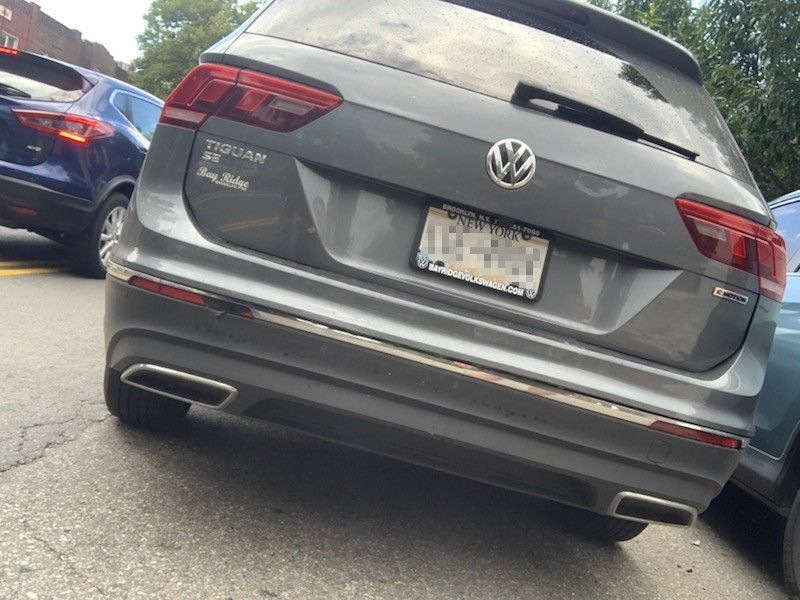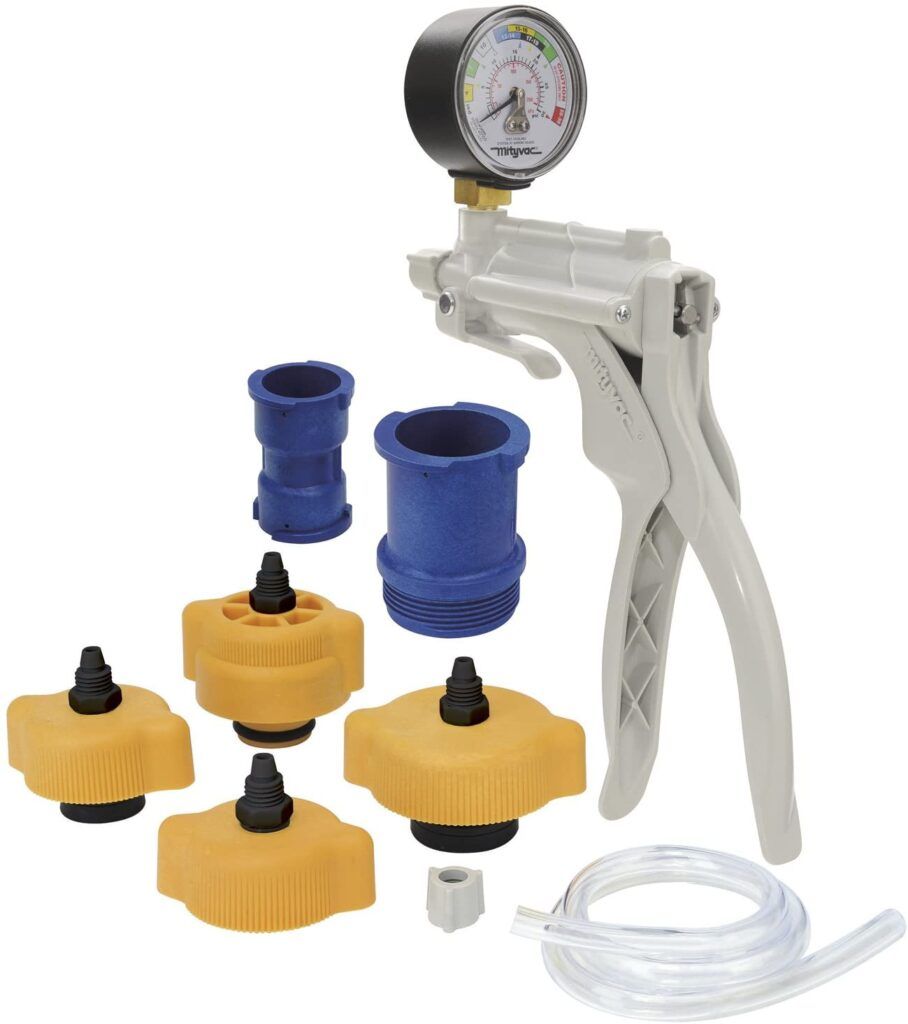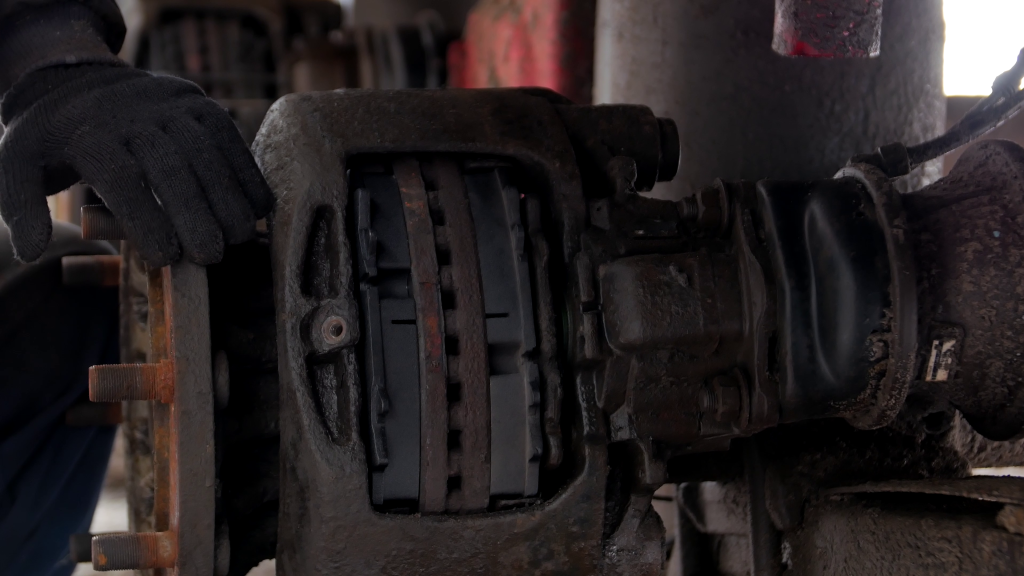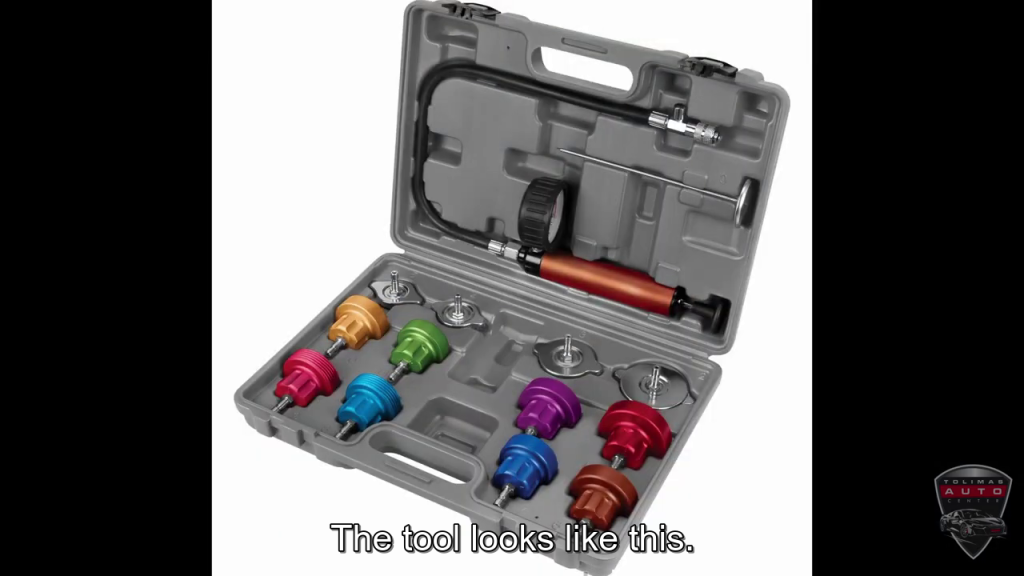One of the most tedious auto repair problems to diagnose can be how to find a coolant leak. Customers are made aware of the problem when they find a puddle of coolant where they were parked or get the dreaded low coolant light. Coolant leaks are particularly dangerous to modern engines as they are mostly made out of aluminum. Older engines were most made out of iron which made them heavier, but much more resistant to overheating. Since aluminum is much lighter and easier to machine, it is now vastly used in modern cars. The problem with aluminum is that is a softer metal than iron. Overheating an aluminum engine a single time can cause head gasket or other expensive repairs. This is why having coolant leak can be a devastating to your wallet. The good thing is that there is common tool, the DIY people can buy to help them find a coolant leak.
This tool is a home user version of the professional tool we use at our shop. Comes with just about every adapter you will need for your average vehicle. To use the tool you simple unscrew your radiator cap when your engine is COLD , do not open the radiator cap when your engine is hot as you will be burnt with scolding hot coolant under high pressure ! Then find the correct adapter in the tool kit and install it properly. Then plug in the vacuum vacuum pump and gauge with the supplied vacuum tube to the radiator cap adapter. Now you want to look at he radiator cap to know the max pressure your system is rated for and simply pressurize the coolant system. Make sure to not over pressurize it or your could break something. Do not surpass the PSI printed on the radiator cap! Once you reach the desired PSI of pressure keep an eye on the gauge to see if the pressure drops. If the pressure doesn’t drop then you will know your cooling system is sealed up tight. Your leak might be located in a non pressurized component like a coolant reservoir.
If you notice the pressure drop then you do have a leak. You can see how bad the leak is based on how quickly the pressure gauge goes down. Now you have to get a good flash light and search for the leak. Check the usual places such as the radiator, hoses, thermostat housing, and water pump. If the leak is bad enough you should be able to see a constant drop of coolant dripping on the floor. If you follow the drip from the bottom up that should help you pin point the leak. Once you find the coolant leak location you can decide if you can change the part yourself or bring it to your trusted mechanic if it is big job. There are time when a coolant leak will not be visible. If the heater core located in your dash is leaking then it will not be obvious. Also if the leak is caused by a bad head gasket or depending on the engine the leak might be located on a coolant hose buried under the intake or somewhere else that is hard to spot. In those cases you might have to pay your trusted mechanic a visit, but you will have the knowledge that you have a leak somewhere in the system. If you have any questions always feel free to contact us.
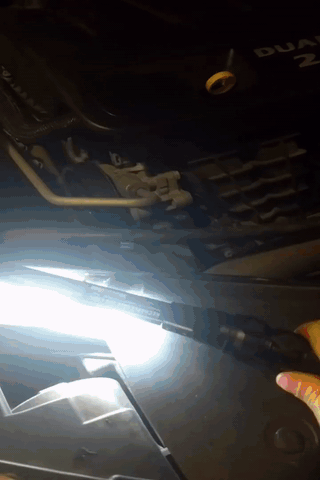
This video shows how pressuring the coolant system can be used to find a leak from the weep hole on a water pump from a 2012 Dodge Avenger with the 2.4 litre engine.
This very useful tool can be purchased here.
https://amzn.to/3n4QN9z
